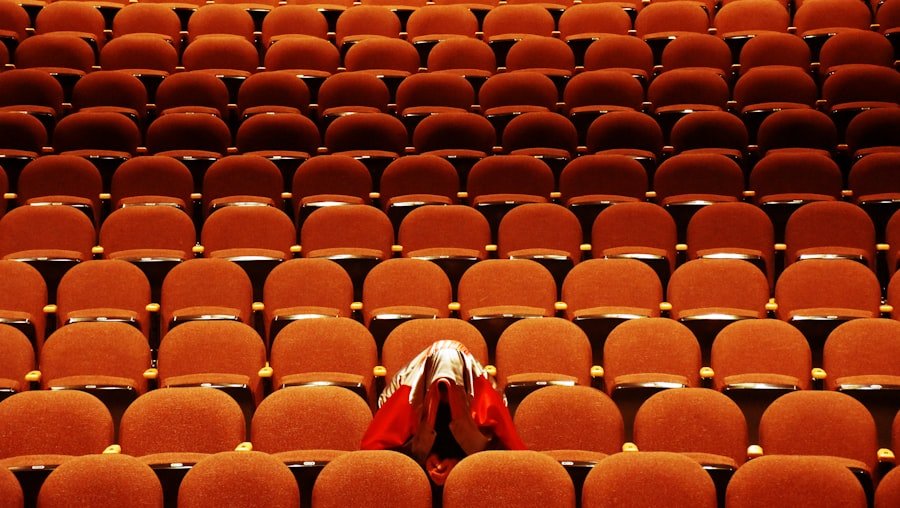Now Reading: The Case Against Unworthy Game Sequels
-
01
The Case Against Unworthy Game Sequels
The Case Against Unworthy Game Sequels

As a passionate gamer, I have often found myself eagerly anticipating the release of sequels to my favorite titles. The excitement that comes with the promise of returning to beloved worlds, characters, and gameplay mechanics is unparalleled. However, the importance of quality in game sequels cannot be overstated.
A well-crafted sequel has the potential to elevate a franchise, deepen player engagement, and even redefine genres. Conversely, a poorly executed sequel can tarnish a franchise’s legacy and alienate its fanbase. In an industry where innovation and creativity are paramount, the pressure to deliver a worthy sequel is immense.
Quality game sequels serve as a bridge between nostalgia and new experiences. They allow developers to build upon established narratives while introducing fresh elements that keep players invested. When done right, sequels can expand the lore, enhance gameplay mechanics, and introduce new characters that resonate with audiences.
As I reflect on my gaming experiences, I realize that the sequels I cherish most are those that respect their predecessors while daring to innovate. This delicate balance is what makes quality game sequels not just important but essential for the health of the gaming industry.
Key Takeaways
- Quality game sequels are important for maintaining the reputation and success of a franchise.
- Unworthy game sequels can have a negative impact on the gaming industry, leading to financial loss and disappointment among fans.
- Lack of innovation and creativity in unworthy game sequels can result in wasted potential and missed opportunities for developers and publishers.
- Unworthy game sequels can damage the reputation of a franchise and lead to frustration among fans.
- There is a need for better standards, quality control, and oversight in game development to ensure that sequels meet consumer expectations and maintain the success of the franchise.
The Impact of Unworthy Game Sequels on the Gaming Industry
The gaming industry is a vast ecosystem where creativity and innovation thrive. However, unworthy game sequels can disrupt this ecosystem in significant ways. When a sequel fails to meet expectations, it can lead to a ripple effect that impacts not only the franchise but also the broader gaming landscape.
As a gamer, I have witnessed firsthand how a disappointing sequel can sour the reputation of an otherwise beloved series. This can result in decreased sales for future titles and even lead to the cancellation of promising projects. Moreover, unworthy sequels can create a sense of distrust among consumers.
When I invest my time and money into a game, I expect a certain level of quality and engagement. If a sequel falls short, it not only affects my perception of that particular franchise but also influences my willingness to support other titles from the same developer or publisher. This erosion of trust can have long-lasting consequences, as gamers become more cautious in their purchasing decisions, ultimately stifling innovation and creativity within the industry.
Lack of Innovation and Creativity in Unworthy Game Sequels

One of the most glaring issues with unworthy game sequels is their tendency to lack innovation and creativity. As I delve into various sequels, I often find myself yearning for fresh ideas and unique gameplay experiences. Instead, many sequels seem content to recycle old mechanics and narratives without offering anything new or exciting.
This stagnation not only disappoints me as a player but also reflects poorly on the developers who fail to push boundaries. The absence of innovation can lead to a sense of monotony in gameplay. When I encounter a sequel that feels like a rehash of its predecessor, I can’t help but feel disheartened.
It’s as if the developers have taken the easy route, opting for familiarity over exploration. This lack of creativity not only diminishes my enjoyment but also risks alienating other players who crave new experiences. In an industry that thrives on pushing limits, unworthy sequels serve as a stark reminder of what happens when creativity takes a backseat.
Negative Impact on the Franchise’s Reputation
The reputation of a gaming franchise is built over years of dedication and quality releases. However, an unworthy sequel can quickly tarnish that reputation, leaving fans disillusioned and frustrated. As someone who has invested countless hours into certain franchises, I understand how deeply disappointing it can be when a sequel fails to live up to its predecessors.
The fallout from such a release can be severe, leading to diminished enthusiasm for future titles and even causing long-time fans to abandon the series altogether. When I think about franchises that have suffered due to unworthy sequels, I can’t help but feel a sense of loss. A once-beloved series can quickly become synonymous with mediocrity if its sequels fail to deliver quality experiences.
This negative impact extends beyond just the immediate fanbase; it can also deter new players from exploring the franchise altogether. The gaming community thrives on word-of-mouth recommendations, and when a sequel disappoints, it can create a ripple effect that affects the entire brand.
Disappointment and Frustration Among Fans
As a dedicated gamer, I have experienced my fair share of disappointment when it comes to sequels that miss the mark. The anticipation leading up to a game’s release is often filled with hope and excitement, only to be met with frustration when the final product fails to deliver. This emotional rollercoaster can be disheartening, especially when I have invested time and energy into following the development process and engaging with fellow fans.
The frustration among fans is palpable when an unworthy sequel is released. Online forums and social media platforms become battlegrounds for discussions about what went wrong and how the developers could have improved the experience. As someone who actively participates in these conversations, I often find myself echoing the sentiments of my fellow gamers—disappointment over missed opportunities and a longing for what could have been.
This collective frustration not only highlights our passion for gaming but also underscores the importance of delivering quality sequels that honor the legacy of their predecessors.
Wasted Potential and Missed Opportunities in Unworthy Game Sequels

Unworthy game sequels often represent wasted potential and missed opportunities that could have elevated a franchise to new heights. As I reflect on some of my favorite games, I can’t help but imagine how different they could have been if their sequels had embraced innovation and creativity. The potential for rich storytelling, engaging gameplay mechanics, and memorable character development is often squandered in favor of safe choices that fail to resonate with players.
When I encounter a sequel that feels like a missed opportunity, it leaves me with a sense of longing for what could have been. The gaming industry is filled with untapped potential waiting to be explored, yet many developers choose to play it safe rather than take risks that could lead to groundbreaking experiences. This reluctance to innovate not only stifles creativity but also deprives players like me of the chance to engage with truly transformative gaming experiences.
Financial Loss for Developers and Publishers
The financial implications of unworthy game sequels extend far beyond disappointed fans; they can also result in significant losses for developers and publishers alike. As someone who closely follows industry trends, I’ve seen how poor sales figures for sequels can lead to budget cuts, layoffs, and even project cancellations within studios. When a sequel fails to meet sales expectations, it sends shockwaves through the entire organization, impacting future projects and stifling creativity.
Moreover, financial losses from unworthy sequels can create an environment where developers become risk-averse, opting for tried-and-true formulas rather than exploring new ideas. This cycle perpetuates mediocrity within the industry, as studios become hesitant to invest in innovative projects that could potentially yield high rewards. As a gamer who values creativity and originality, it’s disheartening to witness how financial pressures can stifle artistic expression in favor of safer bets.
Unwillingness to Take Risks and Experiment in Unworthy Game Sequels
The unwillingness to take risks is one of the most detrimental aspects of unworthy game sequels. As I engage with various titles, I often find myself yearning for developers who are willing to push boundaries and experiment with new ideas. Unfortunately, many sequels seem content to stick with familiar formulas rather than exploring innovative gameplay mechanics or narrative structures.
This reluctance not only stifles creativity but also leads to stagnation within franchises that could otherwise thrive. When developers shy away from experimentation, they miss out on opportunities to create truly unique experiences that resonate with players on multiple levels. As someone who appreciates bold storytelling and inventive gameplay, I find it frustrating when sequels play it safe instead of daring to explore uncharted territory.
The gaming industry thrives on innovation; without it, we risk falling into a cycle of repetitive releases that fail to excite or engage players.
The Role of Consumer Feedback and Expectations in Game Sequels
Consumer feedback plays a crucial role in shaping the direction of game sequels. As an avid gamer who actively participates in discussions about upcoming titles, I understand how important it is for developers to listen to their audience’s expectations and concerns. When feedback is ignored or dismissed, it can lead to disillusionment among fans who feel their voices are not being heard.
This disconnect between developers and consumers can result in unworthy sequels that fail to resonate with their target audience. As I reflect on my own experiences with game sequels, I recognize how vital it is for developers to engage with their community throughout the development process. By actively seeking input from fans and incorporating their feedback into design decisions, studios can create sequels that not only meet expectations but also exceed them.
This collaborative approach fosters trust between developers and players while ensuring that sequels remain relevant and engaging in an ever-evolving gaming landscape.
The Need for Quality Control and Oversight in Game Development
Quality control and oversight are essential components of successful game development, particularly when it comes to creating worthy sequels. As someone who has witnessed both exceptional and lackluster releases, I understand how crucial it is for studios to implement rigorous testing processes and maintain high standards throughout development. Without proper oversight, unworthy sequels can slip through the cracks, resulting in disappointing experiences for players.
In my opinion, establishing clear quality benchmarks is vital for ensuring that sequels live up to their predecessors’ legacies. Developers should prioritize thorough testing phases that allow them to identify potential issues before launch while also seeking feedback from beta testers who represent their target audience. By investing time and resources into quality control measures, studios can significantly reduce the risk of releasing unworthy sequels that fail to meet player expectations.
The Call for Better Standards in Game Sequels
As I conclude my thoughts on the importance of quality game sequels, I feel compelled to advocate for better standards within the industry. The impact of unworthy sequels extends far beyond individual franchises; they affect consumer trust, financial stability for developers, and ultimately shape the future of gaming as a whole. It is imperative that we hold developers accountable for delivering experiences that honor their predecessors while embracing innovation and creativity.
In an era where gamers are more vocal than ever about their expectations, it is crucial for developers to listen and adapt accordingly. By prioritizing quality control measures and fostering open communication with their audience, studios can create sequels that not only meet but exceed player expectations. As someone who cherishes the art of gaming, I believe we owe it to ourselves—and future generations of gamers—to demand better standards in game sequels so that we can continue to enjoy immersive experiences that inspire us all.
While discussing why some games shouldn’t get sequels, it’s important to consider how optimizing your gaming setup for comfort and performance can enhance the overall gaming experience. A comfortable and efficient gaming environment can greatly impact how enjoyable a game is to play, regardless of whether it receives a sequel or not. To learn more about optimizing your gaming setup, check out this article on optimizing your gaming setup for comfort and performance.



























